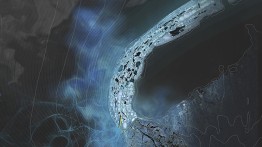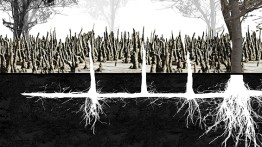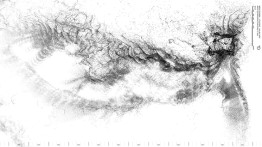Architecture of Nature / Nature of Architecture Book Launch and Panel
Thursday, October 3, 2019, 6:30 - 8:30pm
In a free, public program a group of panelists discusses subjects brought forth by Professor Diana Agrest's new book, Architecture of Nature / Nature of Architecture, based on her advanced research studio at The Irwin S. Chanin School of Architecture of The Cooper Union. Panelists include Peter L. Galison, Caroline A Jones, Beatriz Colomina, Sylvia Lavin, and Kurt Forster. Paul Lewis moderates.
This event is organized by The Irwin S. Chanin School of Architecture and co-sponsored by The Architectural League of New York.
The event is free and open to the public. General public should reserve a space. Please note seating is on a first come basis; an RSVP does not guarantee admission.
About the book:
Based on documentation originating in the environmental sciences, history of science, philosophy, and art, Diana Agrest’s Architecture of Nature/Nature of Architecture presents a unique approach exploring the materiality and the forces at play in the history of the earth dating back millions or billions of years through the architect’s modes of seeing and techniques of representation. While nature has always been historically embedded “within” architecture discourse in different forms, in this work, nature is disengaged from the ideological constraints of architecture to become itself the object of study via a mechanism, essential to the production of knowledge in both science and architecture: representation. Intersecting with scientific, philosophical, and historical discourses, through a transdiscursive approach, fundamental to the understanding of nature, the object of this exploration is a different dimension and scale of time and space.
Transcending the established disciplinary boundaries of architecture urbanism or landscape, the complex processes of generation and the transformations of the extreme natural phenomena presented in this book are both rigorously and creatively explored with original drawings and models, through the work developed in Agrest’s Advanced research studio “Architecture of Nature/Nature of Architecture,” at the Irwin S. Chanin School of Architecture of The Cooper Union between 2008 and 2016 and through essays by Diana Agrest and contributions by Historian of Science Peter L. Galison, Art Historian and Critic Caroline A. Jones, Historian of Science D. Graham Burnett and Writer John McPhee.
Published by A R + D and The Irwin S. Chanin School of Architecture of The Cooper Union
Panelist bios:
Peter Louis Galison is the Joseph Pellegrino University Professor in history of science and physics at Harvard University and Director of the Collection of Historical Scientific Instruments. He holds a Ph.D. at Harvard University in both physics and in the history of science . In 1997, Galison was named a John D. and Catherine T. MacArthur Foundation Fellow. His books include: How Experiments End ,1987 ; Image and Logic 1997;Einstein's Clocks, Poincaré's Maps , 2003; Objectivity (with Lorraine Daston) 2007; Picturing Science, Producing Art 1998, ed. with Caroline A. Jones, and Einstein for the 21st Century: His Legacy in Science, Art, and Modern Culture 2008; ed. with Gerald Holton and Silvan S. Schweber). He has directed, with Robb Moss, the feature documentary films “Secrecy” (2008) and “Containment” (2015).
Caroline A. Jones is an art historian, author, curator and critic. She is a professor in the History, Theory, and Criticism of Architecture and Art program at the Massachusetts Institute of Technology School of Architecture and Planning. She trained in visual studies and art history at Harvard, completing her PhD at Stanford University in 1992. Her books include: Machine in the Studio: Constructing the Postwar American Artist (1996/98); Picturing Science, Producing Art Co-edited with Peter Galison,1998) Eyesight Alone: Clement Greenberg's Modernism and the Bureaucratization of the Senses (2005); Embodied Experience, Technology, and Contemporary Art , Editor, (2006)The Global Work of Art : World's Fairs, Biennials and the Aesthetics of experience (2017).
Beatriz Colomina is an architectural historian and theorist. She is Founding Director of the interdisciplinary Media and Modernity Program at Princeton University and Professor and Director of Graduate Studies in the School of Architecture. Her books include: Are We Human? Notes on an Archeology of Design, Manifesto Architecture: The Ghost of Mies; Privacy and Publicity: Modern Architecture and Mass Media; Sexuality and Space, and the recently published X-Ray Architecture.
Sylvia Lavin is a historian, critic and curator of architecture. She received her Ph.D. from Columbia University and the MIT Press published her first books Quatremère de Quincy and the Invention of a Modern Language of Architecture and Form Follows Libido: Architecture and Richard Neutra in a Psychoanalytic Culture. More recent work includes books, Kissing Architecture and Flash in the Pan, research exhibitions, Architecture Itself and Other Postmodernist Myths (2018) and Everything Loose Will Land: Architecture and the Arts in LA in the 1970s (2013-14) and installation projects, Super Models (2016). She is Professor of Architecture at Princeton University and was Director of Critical Studies in Architecture at UCLA, where she was Chairperson from 1996 to 2006.
Kurt Forster is a professor at Yale University and has taught at Stanford University, MIT, ETH Zurich, and Bauhaus University at Weimar. He was director of the Getty Research Center in Los Angeles and the Canadian Centre for Architecture in Montreal. He has organized major exhibitions on Schinkel, Carlo Scarpa Herzog & de Meuron and the 2004 Venice Biennale. Forster has published widely on the history of art and architecture, including Schinkel: A Meander Through His Life and Work in 2018. He attended the universities of Berlin, Munich, and Florence and received a Ph.D. from the University of Zurich. He holds the Order of Merit of the Federal Republic of Germany, an honorary doctorate from The New School for Social Research in New York and is a RIBA Honorary Fellow.
Paul Lewis, FAIA is Professor and Associate Dean at Princeton University School of Architecture, where he has taught since 2000. He is the President of the Architectural League of New York. He holds a BA from Wesleyan University and an M.Arch from Princeton University. His firm’s designs and drawings have been exhibited globally including the U.S. Pavilion at the Venice Architecture Biennale, and are in the permanent collections of the Museum of Modern Art, San Francisco Museum of Modern Art, and Carnegie Museum of Art. They have received multiple AIA awards and a National Design Award . LTL Architects books include: Opportunistic Architecture (2008), Intensities (2013), and Manual of Section, which was selected by The Deutsches Architekturmuseum as one of the ten best architecture books of the year.
Diana Agrest, FAIA, is a professor at The Irwin S. Chanin School of Architecture of The Cooper Union and has taught at Princeton, Columbia, and Yale Universities. Agrest is internationally renowned for her pioneering and critical approach to architecture and urbanism in practice and theory, considering architecture an interdiscursive field. Her designed and built work, ranging in scale from buildings to cities and urban regions, internationally, has received numerous awards. Her previous books include: The Sex of Architecture; Agrest and Gandelsonas: Works; Architecture from Without: Theoretical Framings for a Critical Practice, and A Romance with the City. She has written, produced and directed the feature documentary film “The Making of an Avant-Garde: The Institute for Architecture and Urban Studies 1967-1984” which premiered at The Museum of Modern Art in NY in 2013.
View the full Fall 2019 Lectures and Events List.
Located in The Great Hall, in the Foundation Building, 7 East 7th Street, between Third and Fourth Avenues











